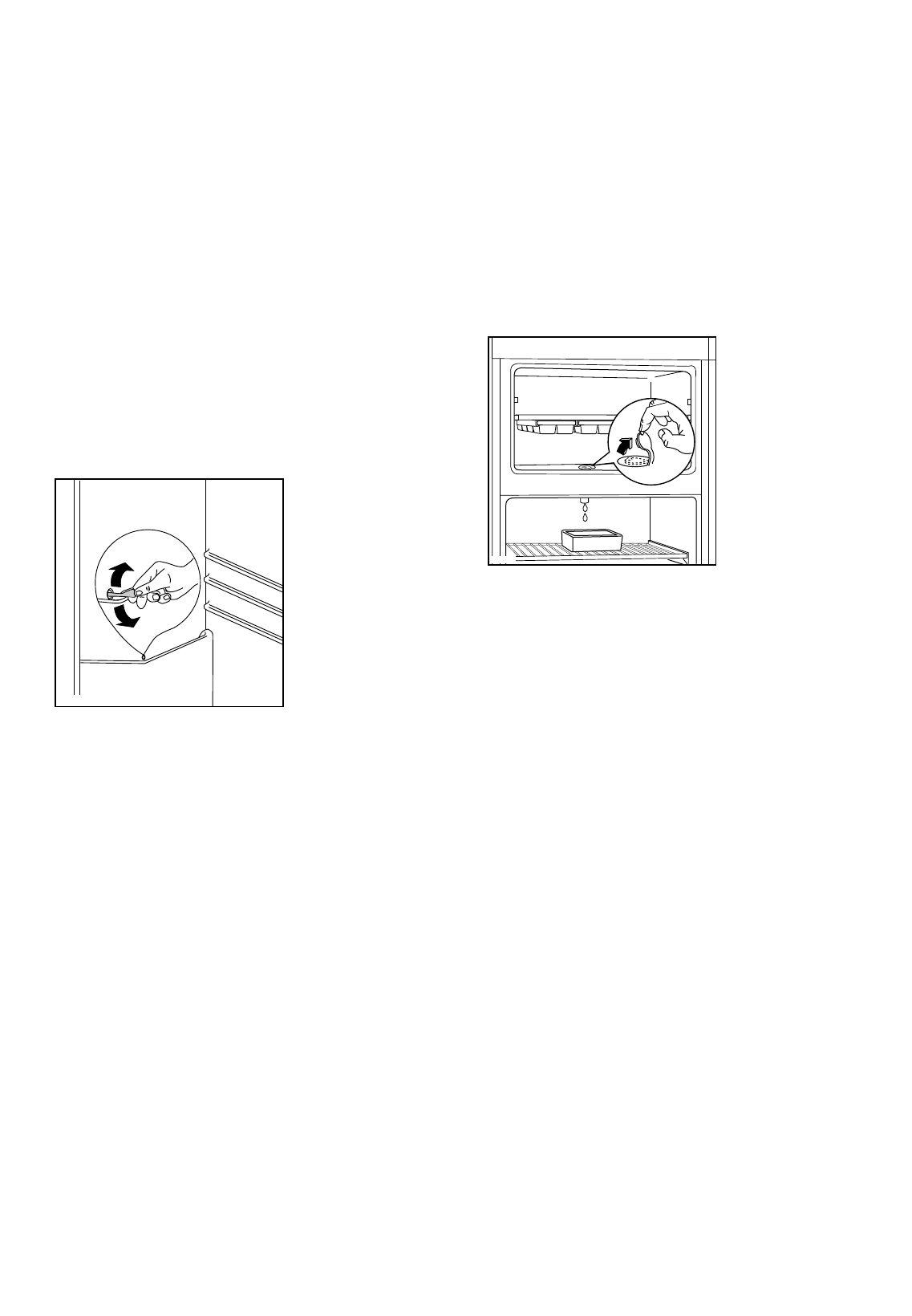
12
Defrosting
Refrigerator
The refrigerator automatically defrosts every time
the compressor stops. The water is discharged, via
the pipe, into a tray located at the back of the
appliance above the compressor, where it
evaporates.
Important
To avoid defrost water overflowing into the fridge,
periodically clean the water discharge hole in the
centre of the V shaped drip collector at the back of
the refrigerator compartment behind the fruit and
vegetable drawer. Use the special cleaner provided
which you will find already inserted into the
discharge hole (Fig. 7).
Fig. 7
Remember to wash the defrost cleaner in hot soapy
water at regular intervals. Dry thoroughly before
replacing.
Freezer
The freezer compartment will become progressively
covered with frost.
When the frost has reached a thickness of up to
4mm it can be removed using the ice scraper
provided with the appliance. During this operation
it is not necessary to disconnect the appliance from
the mains and remove the food. Never use metal
tools for this operation.
However, when the ice becomes very thick on the
inner liner, complete defrosting should be carried
out.
D037
For complete defrosting (once or twice a year)
proceed as follows:
– turn the thermostat dial to the «OFF» position
(O) or disconnect the appliance from the mains.
– Remove any food from inside the freezer and
fridge, wrap it in several sheets of newspaper and
store in a cool place.
– Leave the door open, place a basin on the top
shelf of the refrigerator compartment, under the
drain hole, lift the plug as shown in the figure 8.
Fig. 8
– Clean and dry thoroughly.
– Reconnect the appliance to the mains or reset the
thermostat to a functioning position.
– After letting the appliance run for a least half an
hour, replace the previously removed food into
the compartment.
Important
When defrosting the freezer, the fridge is also
controlled by the thermostat and will not be
operational during this period.
A temperature rise of the frozen food packs, during
defrosting, may shorten their safe storage life.
Attention!
«In the event of a power failure causing the temperature
within your freezer to rise, do not re-freeze the food
without checking its condition. The following guidelines
should assist you.»
Ice-cream: once thawed should be discarded.
Fruits & Vegetables: if soft should be cooked and used
up.
Breads & Cakes: can be re-frozen without danger.
Shellfish: should be refrigerated and used up quickly.
Cooked Dishes: i.e. casseroles should be refrigerated
and used up.
Large Pieces of Meat: can be re-frozen providing
there are still ice crystals remaining within them.
Small Joints: should be cooked and can then be re-
frozen as cooked dishes.
Chicken: should also be cooked and re-frozen as a
cooked dish.
PR138

















